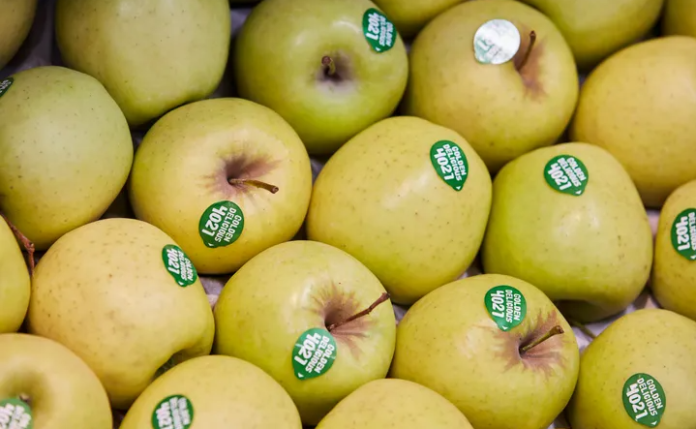Ever wonder why a pear or bell pepper has an individual sticker? If you assumed the sole purpose is for the price scanner at the grocery store checkout, you’d be wrong.
There’s more than meets the eye. Produce stickers, referred to as PLU (price look-up), are important for the supply chain, from packaging and shipping to delivery and selling at the grocery store.
They also can be helpful for consumers. But you’ll need to know how to decode the digits to understand what the numbers mean.
Why does produce have PLUs?
The International Federation of Produce Standards, a global industry group, regulates and assigns PLU codes. And there’s an approval process that occurs before produce gets a PLU.
“The International Federation for Produce Standards assigns PLUs based on applicants meeting requirements and it receiving enough support from a variety of produce associations around the globe,” explained Brianna Shales, the marketing director at Stemilt Growers who also serves on the Produce Identification Committee for the International Fresh Produce Association.
These labels are a way to identify produce, keep track of inventory, and can distinguish the variety as well as the country of origin.
“Stickers are used on all types of fruits and vegetables for identification purposes,” said Jeff Salchenberg, the produce program and category manager for New Seasons Market. “They are useful at various points during the supply chain.”
How does it help the shippers and packers?
“As the packer-shipper, it helps us deliver the right product to the customer, and ensure that they are equipped to run it through their inventory and sales systems,” Shales said.
If something goes amiss or there is a recall, these labels make a zucchini or potato more traceable.
“The origin and lot code are food safety tools that enable sellers to track down the produce included in a given batch or shipment, in case of a recall,” said Annie Myers, the owner of Myers Produce, a woman-owned regional trucking company.
How do stickers help grocery stores?
When truckloads of fruit and vegetables arrive at the grocery store, PLUs provide information on the variety, price and point of origin.
“They help cashiers and self-checkout machines accurately identify the items by the number on the sticker that is assigned to the particular fruit or vegetable,” Salchenberg explained.
Take, for example, apples. A grocery store may have many red apple varieties for sale — Fuji, Honeycrisp, Gala, McIntosh, Pink Lady, Red Delicious. To the untrained eye, they may be hard to distinguish (especially between organic and conventional!), but the digits will help.
“They are important for identifying types and varieties of produce, and helping sell fruits and vegetables for the correct price,” Shales said.















